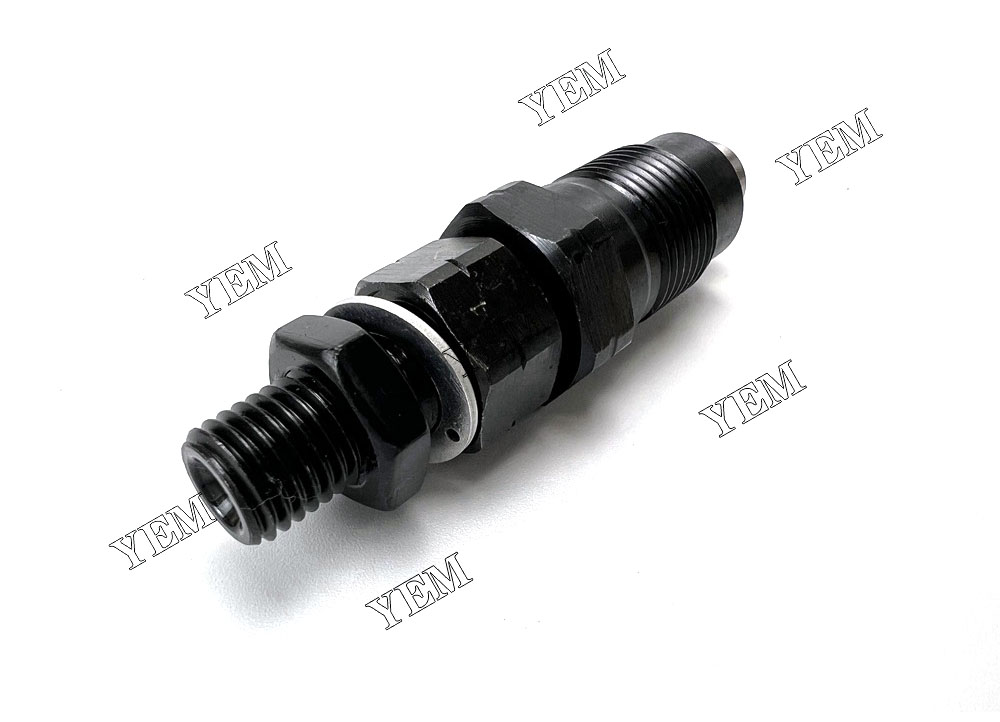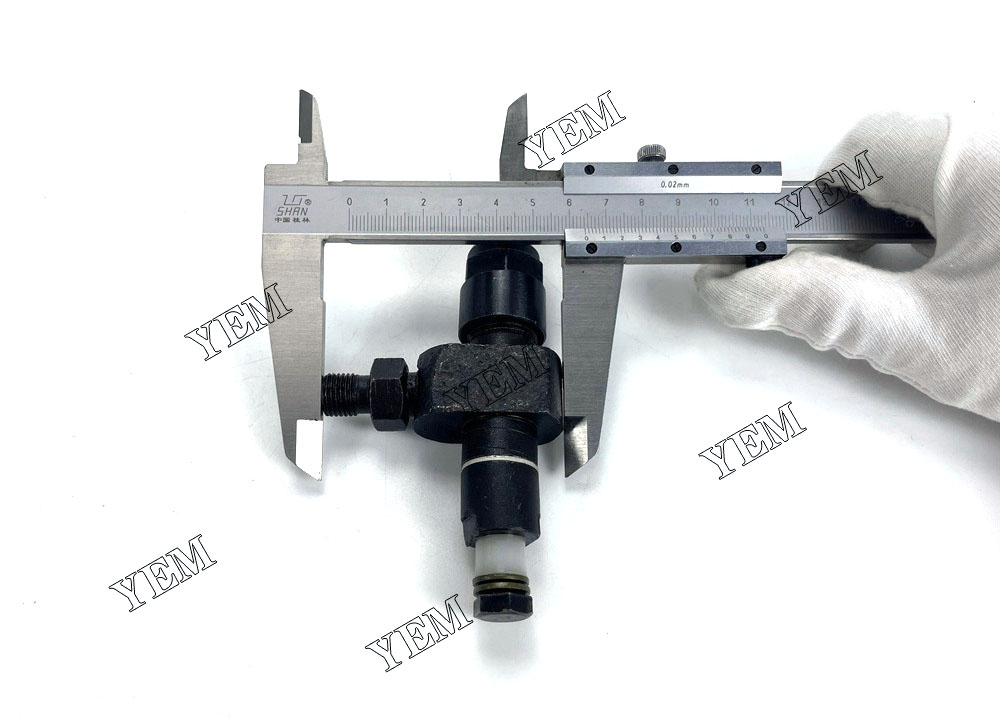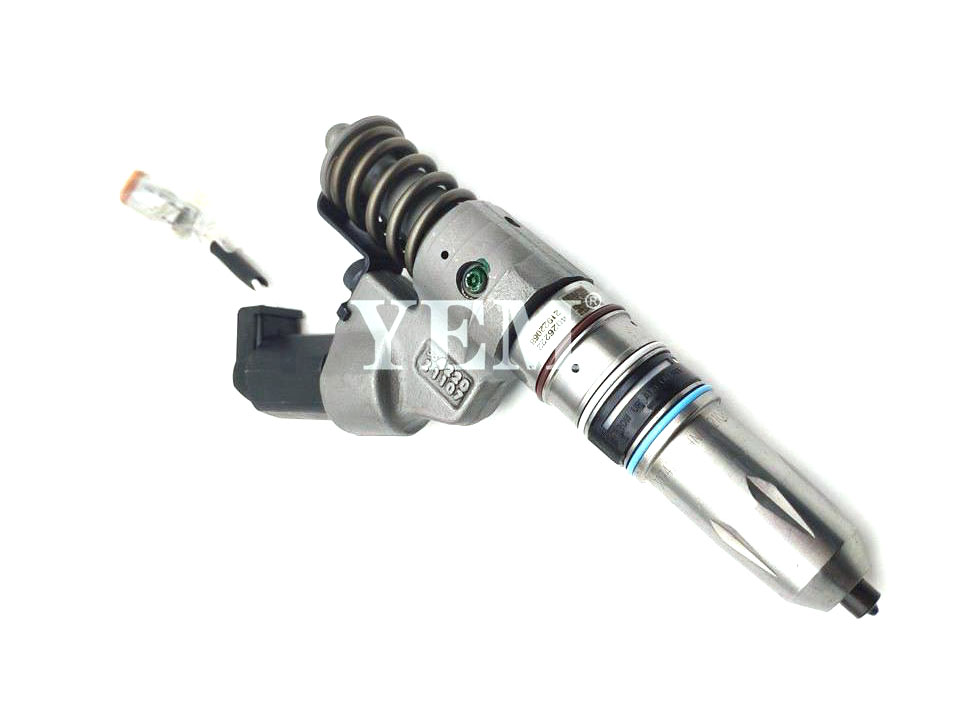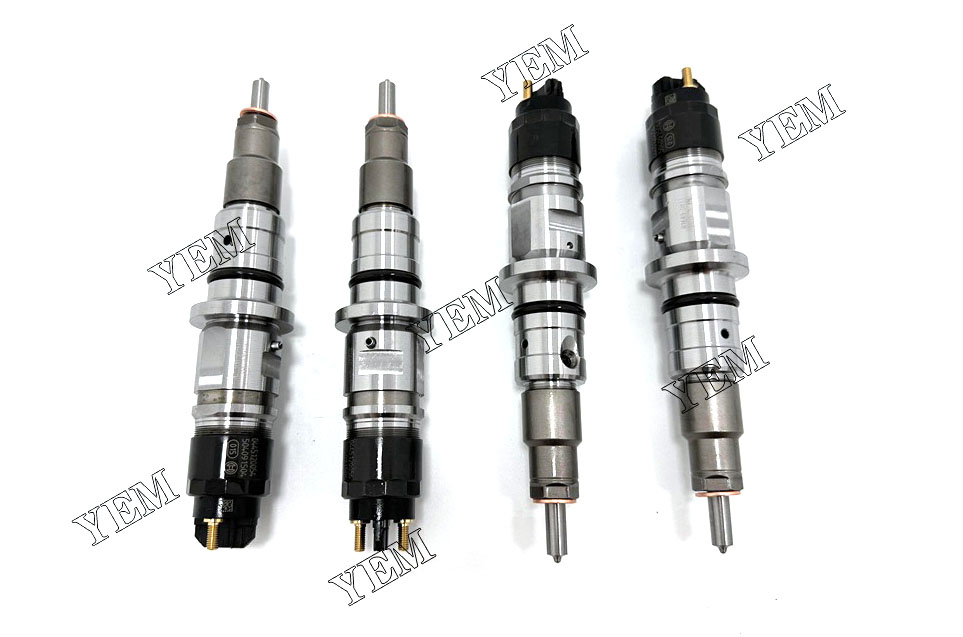Basic principles of fuel injectors
A fuel injector is a device used to inject fuel into the engine, and its basic principles can be summarized as follows:
- Fuel supply: The injector gets fuel from the fuel tank through the fuel system and sends it into the injector.
- Fuel pressure: The fuel is pressurized in the injector, usually by the pressure provided by the fuel pump. This pressure facilitates fuel flow and injection.
- Fuel injector: The fuel injector is the key part of the fuel injector. It consists of one or more fine nozzle holes through which fuel is injected at high velocity into the combustion chamber of the engine.
- Atomization effect: The fuel injector controls the fuel pressure and the size of the nozzle hole to make the injected fuel form fine mist particles. This helps fuel mix better with air, improving combustion efficiency.
- Control and timing: The injection process of the injector requires precise control and timing. Usually, the injection timing of the injector is controlled by the engine control system to ensure that the fuel is injected at the right time and conditions.
Generally speaking, the fuel injector uses the pressure and the design of the nozzle hole to inject fuel into the engine at a high speed to meet the requirements of fuel volume, atomization status and injection timing required for combustion, so as to achieve efficient fuel combustion and engine performance. normal work.
Different types of fuel injectors
There are several common injector types, including the following:
- Injector: The injector is one of the most common types of injectors, which inject fuel into the engine combustion chamber through the nozzle hole. The fuel injector can be designed with electronic fuel injection (EFI) or mechanical fuel injection (MFI).
- Direct injector: A direct injector is an injector that injects fuel directly into the combustion chamber of the engine, rather than through the intake port. It can provide higher fuel efficiency and more accurate fuel control for modern high-efficiency engines.
- Multi-point injector: A multi-point injector is a fuel injector distributed on the intake ports of each cylinder of the engine. They inject fuel evenly into the intake port of each cylinder through their respective injection holes for better fuel mixing and combustion.
- Single-point injector: A single-point injector is a fuel injector installed in the engine intake, usually above the intake manifold. It injects fuel from a single orifice into the intake ports of all cylinders, for older multi-cylinder engines.

It should be noted that each type of injector has its specific application scenarios and technical characteristics, and different types of injectors may be used in different engines and application fields. Additionally, as technology continues to evolve, new injector designs and technologies will emerge.
The structure and components of the fuel injector
The structure and components of the injector can include the following main parts:
- Nozzle: Nozzle is the core part of the injector, which injects fuel into the engine combustion chamber through tiny nozzle holes. The size and shape of the nozzle hole determine the flow rate and injection characteristics of the injected fuel.
- Spray Plate: The spray plate is located at the end of the fuel injection nozzle and has multiple spray holes. It can control the number, size and arrangement of the nozzle holes, thereby affecting the atomization effect and injection angle of the fuel injection.
- Valve Body: The valve body is the outer casing of the injector, containing the injector nozzle and other internal components. It acts to hold and protect internal components.
- Drive mechanism (Actuator): The drive mechanism is used to control the injection process of the injector, which can be of different types such as electromagnetic drive, pressure drive or mechanical drive. The driving mechanism can open or close the fuel injector according to the control signal to control the injection of fuel.
- Electromagnet (Solenoind): Electromagnet is a common fuel injector driving mechanism, which generates a magnetic field through current excitation to open or close the spool of the valve body to control fuel injection.
- Control System Interface: The fuel injector is usually connected with the engine’s control system to receive control signals and achieve precise fuel control. These interfaces may include electrical connections, data communications, etc.
It should be noted that the specific structure and components of the injector may vary due to different types, different brands and different technical designs. The parts listed above are common injector structures, but not all injectors contain exactly the same parts.

Fuel injector failure and maintenance
The fuel injector may have some failures during use, and corresponding maintenance and repairs are required. The following are some common injector failures and corresponding maintenance measures:
- Blockage: The nozzle hole of the fuel injector may be blocked by deposits, carbon deposits, etc., resulting in the failure of normal injection of fuel. Maintenance measures include cleaning the fuel injector with a special cleaning agent, or removing the fuel injector for thorough cleaning.
- Uneven injection: When there is a problem with the nozzle hole or atomization effect of the injector, it may cause uneven fuel injection and cause the engine to run unstable. Maintenance measures include cleaning the injector nozzles, replacing damaged orifice plates, or calibrating the spray angle of the injectors.
- Leaks: Aged, damaged or loose injector seals can cause fuel to leak. Maintenance measures include checking and replacing the seals of the injectors to ensure that the injectors have good sealing performance.
- Curing and aging: After long-term use, the fuel residue in the injector may solidify and deteriorate, affecting the normal operation of the injector. Maintenance measures include regular cleaning of injectors, replacement of aging seals, and use of high-quality fuel to reduce deposit formation.
- Control system failure: The control system of the fuel injector (such as the electronic control unit) may also fail, causing the fuel injector to be unable to accurately control fuel injection. Maintenance measures include checking and repairing faults in the control system, or replacing damaged control components.
For the maintenance and fault repair of the injector, it is recommended to operate according to the maintenance manual and guidelines provided by the manufacturer, or send the vehicle to a professional maintenance organization for overhaul. Pay attention to safety and follow the relevant operating procedures when maintaining the injector.
Adjustment and optimization of injector performance
Tuning and optimizing injector performance can help improve engine fuel efficiency, power and emissions. Here are some common methods and techniques:
- Fuel injection volume adjustment: According to actual needs, the fuel supply can be optimized by adjusting the fuel injection volume of the injector. This can be achieved by changing the nozzle of the injector or adjusting the injection time.
- Fuel injection angle adjustment: more accurate control of the fuel injection angle can improve the fuel atomization effect and combustion process. Adjusting the orifice plate of the nozzle or using an adjustable injector can optimize the injection angle.
- Optimization of injection shape: By changing the shape, layout and number of injector holes, the shape and distribution of fuel injection can be optimized to improve combustion efficiency and power output.
- Use high-performance fuel injectors: Choose high-performance fuel injectors, such as direct injectors or multi-point injectors, to achieve more accurate and uniform fuel supply, improve combustion efficiency and power performance.
- Fuel quality and oil product adaptation: Selecting high-quality fuel suitable for engine requirements and ensuring the use of specification-compliant engine oil can reduce injector deposits and damage, and provide good injection and combustion characteristics.
- Regular maintenance and cleaning: Regular cleaning and maintenance of injectors is the key to maintaining optimal performance. This includes regular inspection and cleaning of injectors, replacement of worn or aged components, and calibration of injector injection parameters.

Please note that when performing fuel injector performance adjustment and optimization, it is recommended to consult professional technicians or operate in accordance with the guidelines and specifications provided by the manufacturer to ensure safe and effective adjustments.
Development Trend of Fuel Injectors
As a key component of the internal combustion engine fuel system, the injector also shows some trends in the continuous technological development:
- Direct injection technology: Direct injection technology is a fuel injection technology that directly injects fuel into the combustion chamber. Compared with traditional multi-point injection, direct injection technology can achieve more precise fuel control, improve combustion efficiency, reduce emissions and fuel consumption.
- Flexible fuel injection system: With the diversification of available fuels, the development of flexible fuel injection systems is becoming more and more important. Such a system can accommodate different types of fuels and enables quick switching and adaptive adjustments.
- Development of EFI technology: EFI technology has become a common fuel injection system in modern engines. In the future, EFI technology may continue to evolve to provide greater precision, better responsiveness, and lower energy consumption.
- Intelligentization of fuel system: With the intelligentization and interconnection of automobile technology, fuel injectors may also be integrated into intelligent control systems. Through the application of sensors and algorithms, fuel injectors can better sense and adapt to vehicle operating conditions to achieve precise fuel control and optimization.
- High-pressure fuel injection technology: High-pressure fuel injection can achieve better fuel atomization and distribution, thereby improving combustion efficiency and power performance. In the future, injectors may develop towards higher pressures.
It is worth noting that the trends and innovations in fuel injectors are mainly in the automotive, aerospace and industrial sectors. In addition, the requirements of environmental protection and energy efficiency are also important driving forces for the development of fuel injector technology. With the continuous advancement of technology and changes in demand, injector technology will continue to evolve and improve to meet future needs and challenges.

Contact us
Thank you for your interest in YEM Excavator Parts Team! We are a professional excavator accessories team, committed to providing customers with high-quality and reliable excavator accessories solutions.
Our team has years of industry experience and the technical knowledge to accurately identify and resolve various excavator parts issues. Whether you need to replace a damaged part, upgrade an existing accessory or find a specific accessory, we are able to provide you with professional advice and assistance.
As a responsible supplier of excavator parts, we cooperate with many well-known manufacturers to ensure that the provided parts are of excellent quality and reliable performance. Our team can not only provide you with standard excavator accessories, but also can customize according to your specific needs.
We understand that time is of the essence in your excavator operations, so we are committed to providing fast and efficient parts supply services. No matter where you are in the world, we can provide you with the accessories you need in time and ensure that they reach you accurately.
If you are interested in our services or have any needs about excavator accessories, please feel free to contact us. Our team will do our best to provide you with the best service and solve any problems for you. Look forward to working with you!
